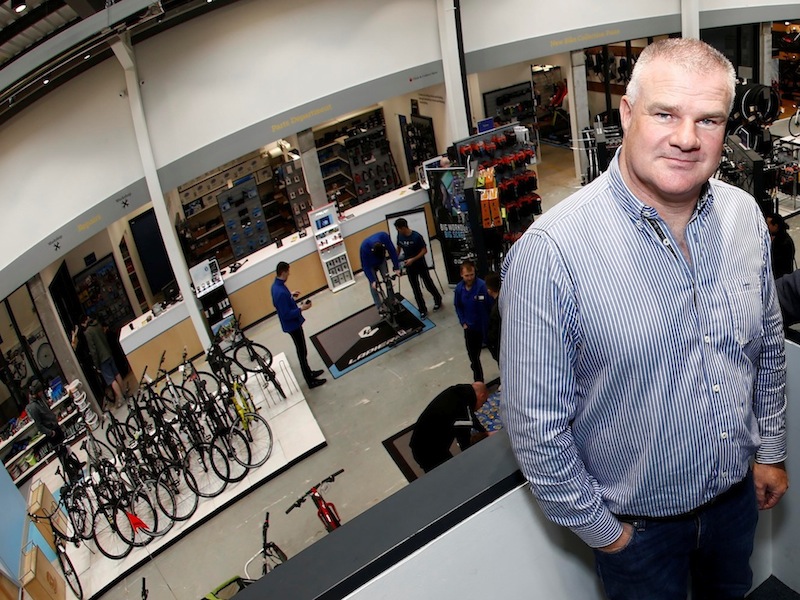Here’s a useful guide to writing and sending a press release. You can also download our free press release template.
If you are starting out in business, developing a new product, doing something innovative, expanding and hiring, or something newsworthy in business, it’s important that you send out a press release.
DOWNLOAD: Press Release Template
The six ‘golden rules’
- Write your release for the end audience, not yourself or your boss.
- Use a short, active and factual title. Avoid puns or ‘witty banter’.
- Write a first paragraph that can stand alone.
- Include some quotes – two or three, preferably from different sources but please, never quote a person as being ‘delighted’, as in ‘We are delighted with this new partnership.’ A journalist will never use quotes that contain the words ‘delighted’, ‘amazed’ or ‘awesome’.
- Don’t over cook it. Be brief, interesting and useful. A press release should never be more than 400 words long (preferably shorter).
- Include ‘notes for editors’ spelling out all the background info, important stats, and the contact details they might need. Make it easy for everyone.
How do you start?
Keep the press release interesting, simple and factual. Make sure your spelling and grammar are perfect and use the English version of all words.
A press release should be written in the style of the target newspaper/radio station/social media/online channel, so it connects with the audience.
The content should be accurate, not biased towards your company, product or particular point of view (it is not the job of the journalist to be a mouth-piece – there should be a legitimate news angle).
Don’t be too enthusiastic with descriptions – e.g. “world-beating company” or “life-changing product” (be mindful of advertising standards too).
Don’t use the term: ‘We are delighted …”. Ever. Just don’t use it. Find a better way to express enthusiasm.
The mechanics of a press release
Headlines are critical. They have to attract the journalists’ attention first. They should be short, arresting and provide a good indication of the main news angle
The first paragraph should answer the questions who, what, why, when, where and how.
If a press release is embargoed, the date and time of the release must be on the top of the news release.
Some journalists prefer to have the press release pasted into the body of an email instead of having to wait for an attachment to open.
Social and online media are very different platforms to traditional media so you need to familiarise yourself with all aspects of how they work, what works best and how to manage issues that arise.
Targeting the media
Look to work on what different media want – what’s new; what’s interesting, what is getting coverage?
Look closely at the publication dates/times for target media – you must work with their schedules and plan in advance to optimise when you send a release/photo/tweet/blog.
Consider what else is happening on a given day or period, so you are not competing with news that will be carried ahead of your story.
Research which media is of relevance to your industry and be aware of the broader news landscape.
Before you contact a journalist, know exactly what areas they are covering right now.
Develop relationships with radio and television producers/researchers if you want to be a ‘go-to’ person in your area of expertise.
Engaging with a journalist
Follow up on your press release and contact the journalist/media outlet to confirm that they received it, to check they have the details they need. (However, do not harangue them).
If you promise a journalist an exclusive that means that no other media outlet (including online/social media/other geographies have it), until they have run it. The journalist should reciprocate and let you know if they are not going to use it so you can explore other opportunities.
If a journalist asks a question or is looking for specific information be sure that your spokesperson/ colleague is in a position to respond.
Have a discussion about the type of questions the journalist could ask in an interview. However, they are unlikely to confirm every question in advance or guarantee that they are going to ask particular questions.
It can depend on the publication, but it is rare that a journalist will share an article in advance of it being printed.
If you are expecting a piece of coverage and it does not appear you can check-in with a journalist on why not. However, you may have to accept that it is not going to be carried and regroup on it.
Photographs
Photographs are an essential element and can be the deciding factor in a story being taken.
It can be a worthwhile investment to employ a professional photographer who knows media – give them a tight brief on what you want and where the photograph will be targeted.
If you want the photographer to issue the photos ensure you or a colleague is available to approve them quickly.
If you promise an image make sure it is sent to the right person on time and that it is relevant, high quality reflects the story and is in keeping with the pictures that the publication uses.
Photographs must be fully and accurately captioned with proper spellings/titles labeled left to right looking at the picture on the page.
Depending on space, sometimes an extended caption is more likely to be picked up than a full press release or it can be a follow up to press release information previously carried.
An extended caption should provide a summary of the photo is about – the event, the venue, and who is in it and a brief synopsis of the reason it was taken.
At all times be professional and courteous – everyone has a job to do.
Contacts
A useful place to find media resources, other press releases and media contacts is Media HQ.








